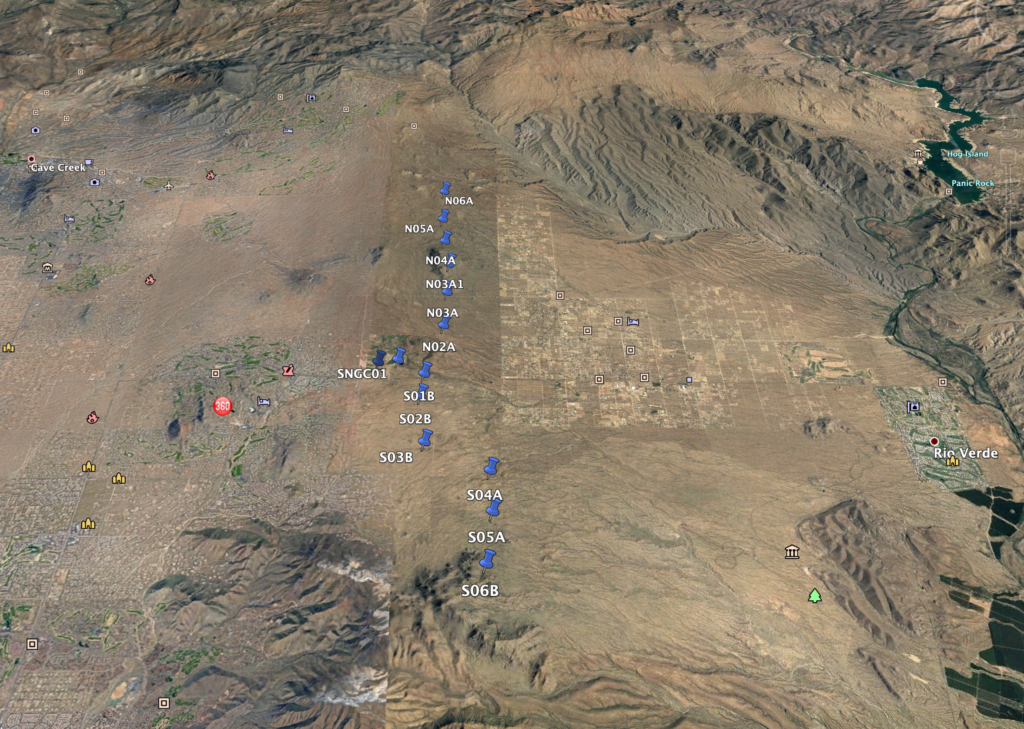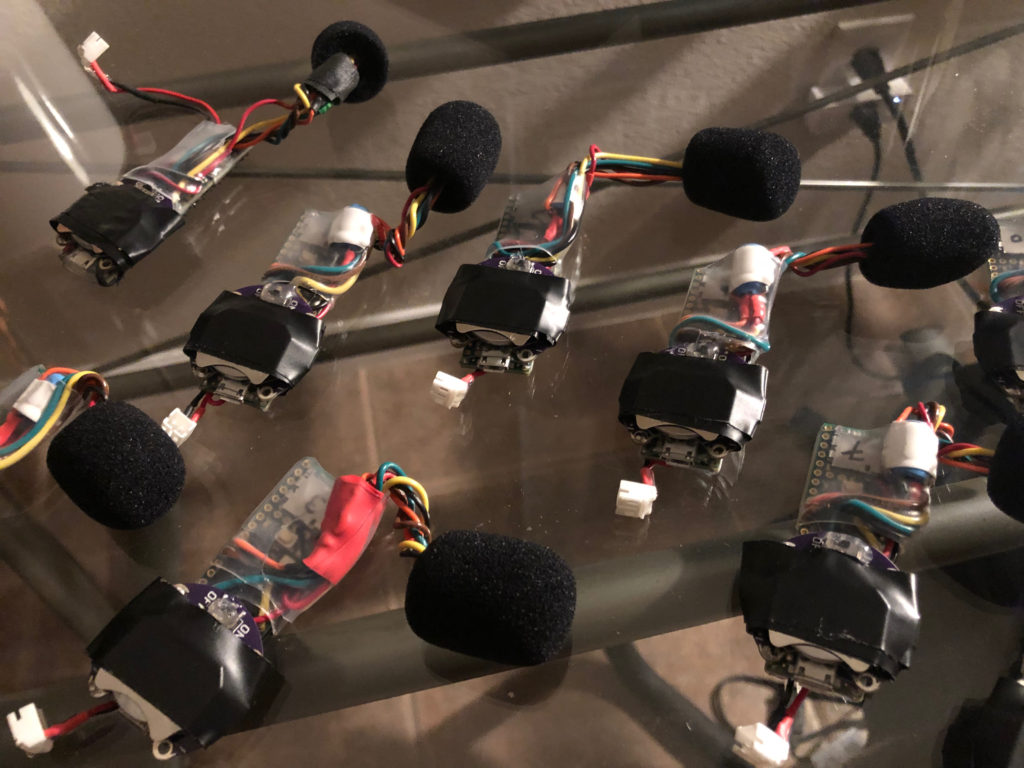
For the last 2 years we have been conducting auditory monitoring in the McDowell Sonoran Preserve in partnership with the McDowell Sonoran Conservancy and the Phoenix Zoo – examining the psychoacoustic impact of traffic passing on the road that bisects the preserve and also counting and analyzing sound from aircraft overhead.

We have also been modeling how sound changes with weather variables and modeling how this might help us measure and predict climate impact (see the Ecosonics project and poster) – we have much more to do in terms of developing a realtime map of how the psychoacoustic parameters dynamically vary across the preserve, but the initial data is very exciting.
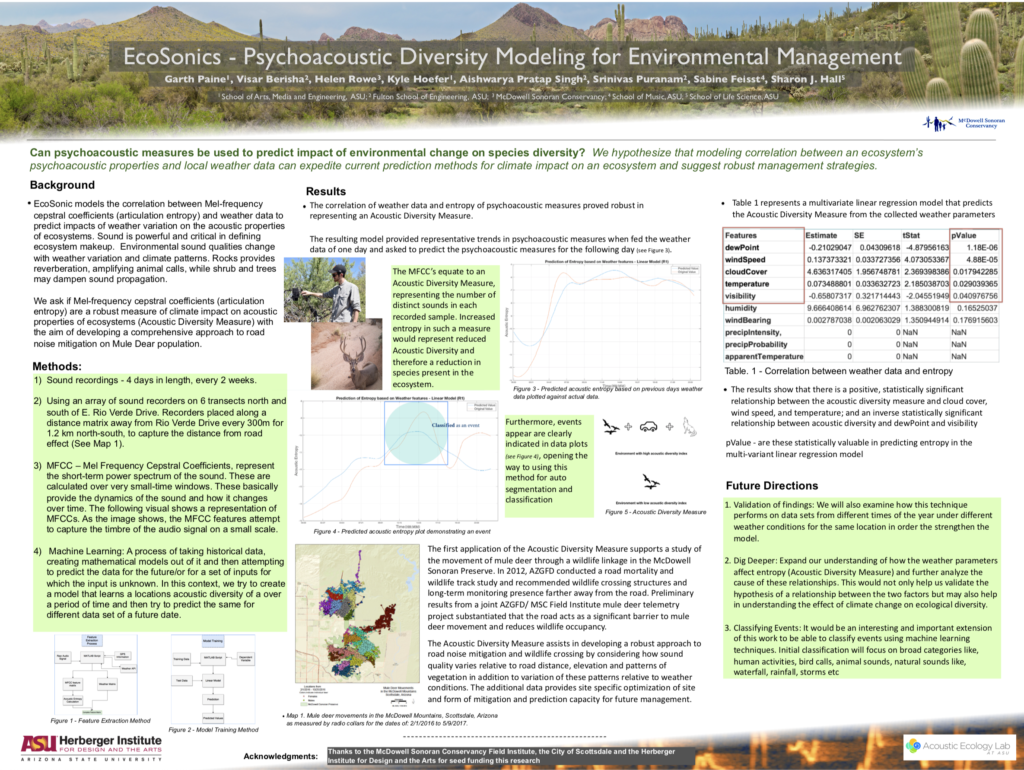
In order to undertake this work (we now have 2 years of recordings from 14 recorders) we built 20 small sound recorders which can be deployed for long periods and take very large SD cards. Here is a link to the GitHub project detailing that recorder with uses a MEMS mic and a Teensy. The design and build instructions are available on GitHub
—
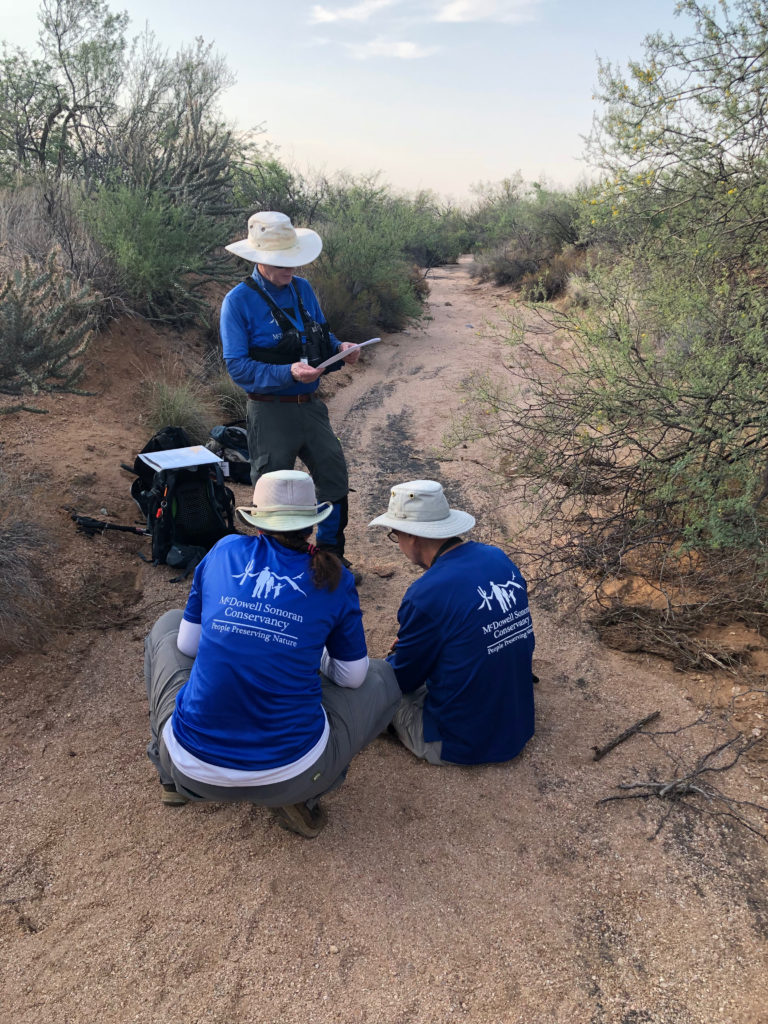
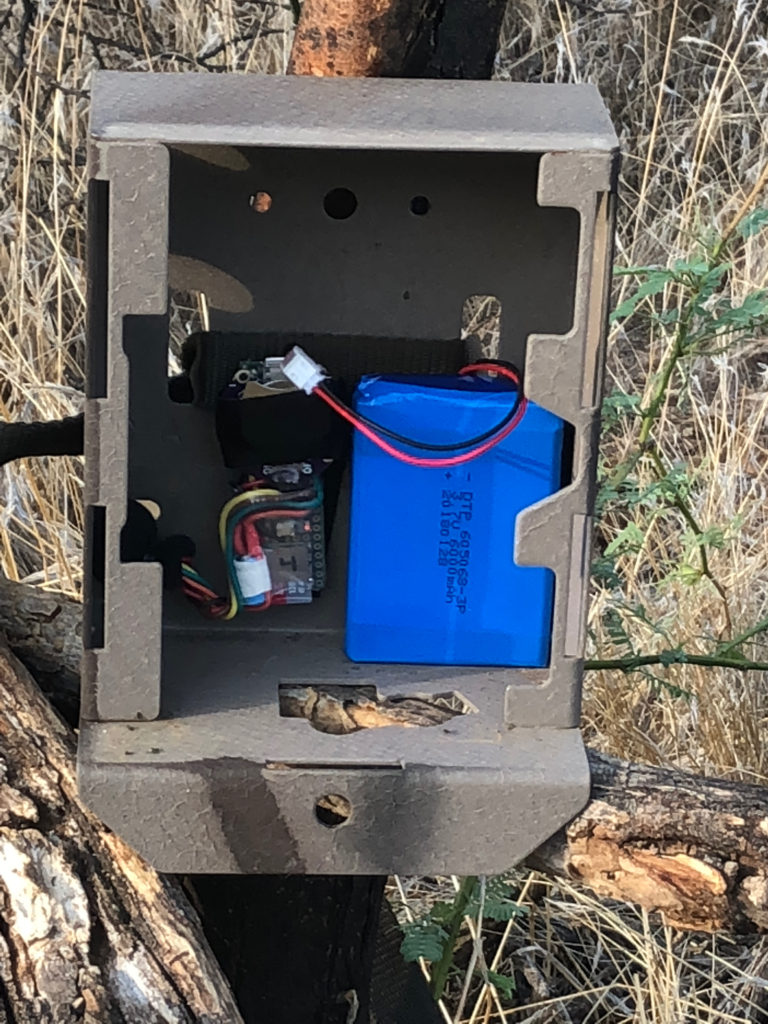
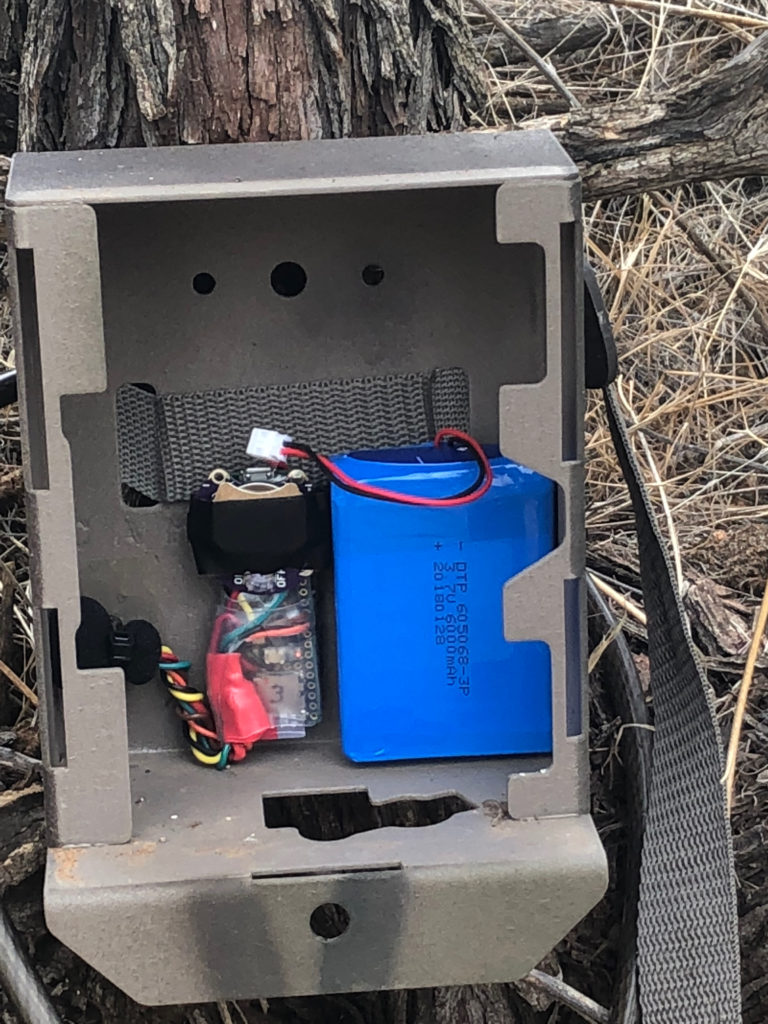






31°57’2.90″N 112°51’42.09″W 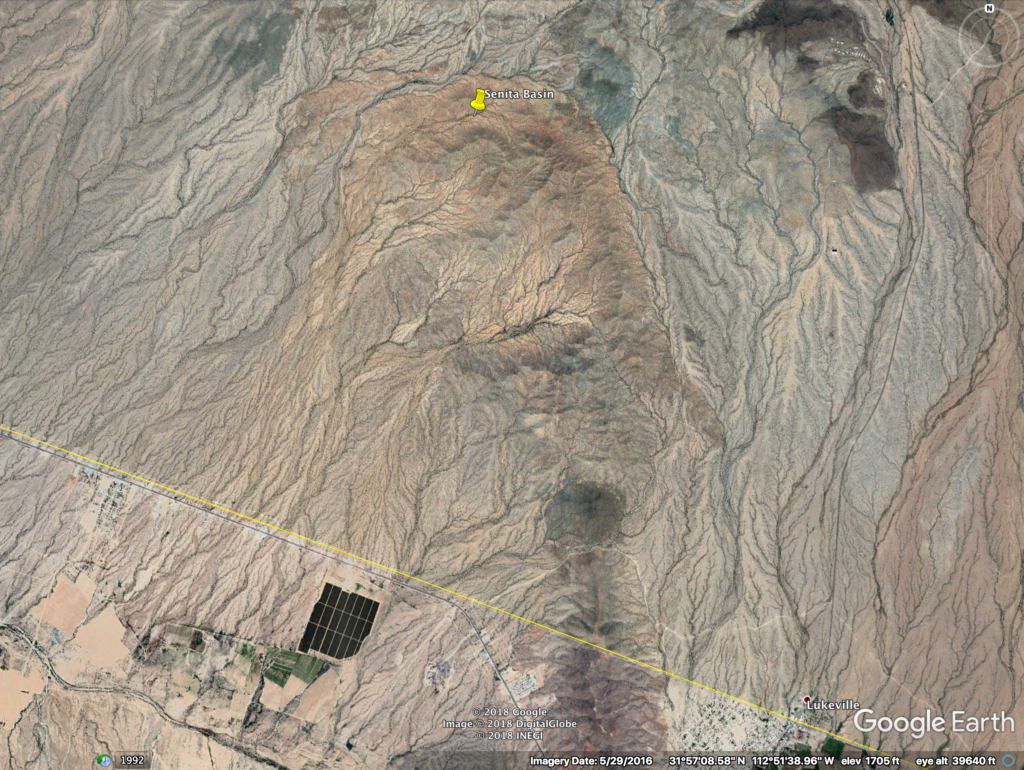
We also 3D printed small cases so we could weather protect the recorders and place them inside a strong metal case associated with a camera trap at the same location. The 14 recorders are placed at 1 mile intervals, 7 miles either side of the road, so we can track changes in the environment across the 14 mile transect.

For more information on the EcoSonics project see Dr. Paine’s article in the Conversation, titled Acoustic Ecology 2.0
